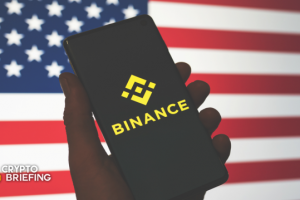
Key Takeaways
Vitalik Buterin has clarified why Ethereum’s block time is unlikely to be made significantly quicker in the future.
Reducing block time, whether Proof-of-Work or Proof-of-Stake, comes with consequences in regard to decentralization and network safety, according to Buterin.
Other prominent cryptocurrency founders and developers have joined the discussion on Twitter.
Share this article
In a comment that may rattle some Ethereum enthusiasts, Vitalik Buterin has expressed the view that Ethereum may never be much faster than it is now. He explained that reducing block time was constrained by the necessary tradeoff with “safety and decentralization.”
Vitalik on Network Speed
Vitalik Buterin has suggested that the Ethereum blockchain is unlikely to get much faster, in spite of its planned upgrades.
Buterin’s comments came yesterday in response to a Reddit user who asked why switching from Proof-of-Work to Proof-of-Stake would not reduce block confirmation times.
As with most blockchain-related problems, optimizing for one variable (e.g. speed) likely will be at the expense of another (e.g. network security). The tradeoff of speed (block time) and decentralization/security exists regardless of whether a network is Proof-of-Work or Proof-of-Stake, albeit for different reasons.
With Proof-of-Work, the “core issue,” according to Buterin, is the built-in randomness of block time. Ethereum might have an average block time of 13 seconds, but that does not mean a block actually is written every 13 seconds on the dot. There is some chance a new block could be validated only one second after the confirmation of the last, explains Buterin. When this happens, the miner with the better network connection is more likely to be the first to propagate the next block. Reducing block times makes this problem much worse.
With Proof-of-Stake, there is a different factor at play. The version of Proof-of-Stake Ethereum will take, writes Buterin, requires blocks to acquire roughly 9,100 signatures per slot to be included, affording a “very high level of confirmation after even one slot.” Since the time it takes for that process is more logarithmic than linear, reducing slot time by half (where only around 4,550 signatures was required) “would not work, as each now-shorter slot would still take almost as long.” Reducing block times would cause many signatures to be excluded from the blockchain, and “highly centralized actors” would be in increasingly favorable positions to reap disproportionate rewards.
Therefore, Buterin concludes that the future upgrades will not constitute a meaningful reduction in “per-slot time,” and that applications in need of quick confirmations will need to rely on channels or rollups.
Prevalent developers of other Layer 1 chains also chimed in on the discussion on Twitter. The founder of Ava Labs, which developed Avalanche, Emi̇n Gün Si̇rer, tweeted at Buterin, seeming to criticize him for his choices of chain parameters that Sirer says makes consensus the bottleneck. Buterin responded, telling Sirer to “stop being dishonest” and clarified that his past claims about consensus not constituting the bottleneck referred to bandwidth rather than latency.
The discussion continued, and Anatoly Yakovenko, the co-founder of Solana Labs (developer of Solana) also weighed in with questions of his own in regard to signature requirements as a function of slot times. The co-founder of Dogecoin joined the dialogue too, asking Sirer why he named his “cryptocurrency after something that falls down.”
Disclosure: At the time of writing, the author of this piece owned ETH and several other cryptocurrencies.
Share this article
The information on or accessed through this website is obtained from independent sources we believe to be accurate and reliable, but Decentral Media, Inc. makes no representation or warranty as to the timeliness, completeness, or accuracy of any information on or accessed through this website. Decentral Media, Inc. is not an investment advisor. We do not give personalized investment advice or other financial advice. The information on this website is subject to change without notice. Some or all of the information on this website may become outdated, or it may be or become incomplete or inaccurate. We may, but are not obligated to, update any outdated, incomplete, or inaccurate information.
You should never make an investment decision on an ICO, IEO, or other investment based on the information on this website, and you should never interpret or otherwise rely on any of the information on this website as investment advice. We strongly recommend that you consult a licensed investment advisor or other qualified financial professional if you are seeking investment advice on an ICO, IEO, or other investment. We do not accept compensation in any form for analyzing or reporting on any ICO, IEO, cryptocurrency, currency, tokenized sales, securities, or commodities.
See full terms and conditions.
Vitalik Buterin Puts Forward EIP-4488
This week Vitalik Buterin and Ethereum developer Ansgar Dietrichs co-authored a new Ethereum Improvement Proposal called EIP-4488 that seeks to cut the gas fees of Ethereum Layer 2 scaling solutions….
Vitalik Buterin Proposes “Multidimensional EIP-1559” for E…
Vitalik Buterin has published a new piece addressing Ethereum gas fee markets. Specifically, he discussed launching a new “multidimensional” EIP-1559 update. Vitaik Buterin Makes New Ethereum Proposal Vitalik Buterin has…
What Is The Crypto Volatility Index?
The Crypto Volatility Index (CVI) is a decentralized solution used as a benchmark to track the volatility from cryptocurrency option prices and the overall crypto market.
Ethereum Scraps “ETH 2.0” in Roadmap Rebrand
The Ethereum Foundation has rebranded the terms “Ethereum 1.0” and “Ethereum 2.0” in order to avoid future confusion. Going forward, they will be known as Ethereum’s “execution layer” and “consensus…
















